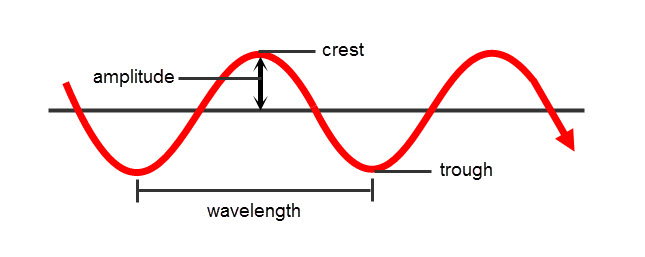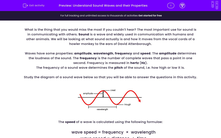What is the thing that you would miss the most if you couldn't hear? The most important use for sound is in communicating with others. Sound is a wave and widely used in communication with humans and other animals. We will be looking at what sound actually is and how it moves from the vocal cords of a howler monkey to the ears of David Attenborough.
Waves have some properties: amplitude, wavelength, frequency and speed. The amplitude determines the loudness of the sound. The frequency is the number of complete waves that pass a point in one second. Frequency is measured in hertz (Hz).
The frequency of a sound wave determines the pitch of the sound, i.e. how high or low it is.
Study the diagram of a sound wave below so that you will be able to answer the questions in this activity.

The speed of a wave is calculated using the following formulae:
wave speed = frequency × wavelength
wave speed = distance ÷ time
Humans can hear sounds with a frequency of between 20 and 20,000 Hz. Sound waves with frequencies below 20 Hz are called infrasound. Some animals like elephants and giraffes communicate using infrasound. Whales also communicate with infrasound and their calls can travel for hundreds of kilometres in the ocean because infrasound waves travel further than sound waves of higher frequencies.
Infrasound is used for studying animals and detecting volcanic eruptions.
Ultrasound is sound made by waves with frequencies higher than 20,000 Hz. Dolphins use ultrasound to communicate and bats use sonar (sending ultrasound waves, which are reflected by things around them so the animal listens out for the echo) to detect what is around them. Sonar is also used in submarines and ships to detect the depth of the sea or to detect fish. Some of the ultrasound sent by the ship is reflected by the sea bed. The echo is detected and the sonar equipment measures the time between the ultrasound being sent and the echo returning. One of the wave speed formulae is then used to calculate the distance to the sea bed. Ultrasound is also used to make images of things in the body, for example, unborn babies.
Right then, are you ready for some questions?








